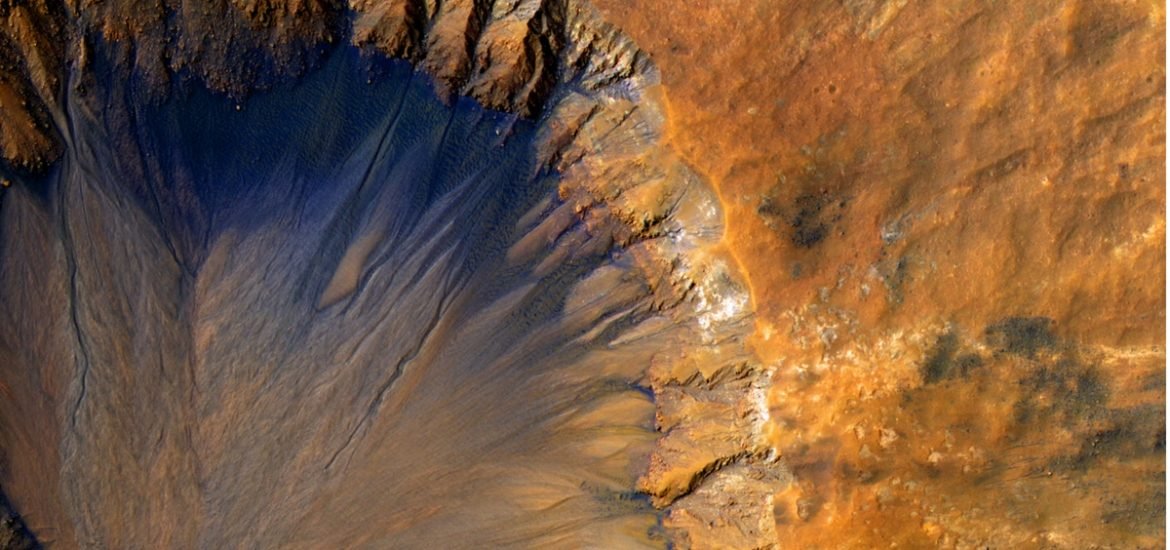
Astronomers have spotted a huge lake buried deep beneath a polar ice cap on Mars. The research published on July 25th in the journal Science points to a 20-km-wide reservoir of water that could reach up to 1-m deep. While the lake is unlikely to be inhabited ― as it is frigid and full of salts ― the mere presence of liquid water hints at the possible existence of other more habitable bodies of water.
Scientists have long suspected water may have flowed across the surface of the red planet billions of years ago, a hypothesis based on observed spherical deposits and comprehensive martian mineral studies. The planet’s surface may once have been made up of interconnected waterways when the atmosphere was warmer and thicker, but now appears to be no more than a barren desert of red sands owing to the low atmospheric pressures that exist today, which mean any surface water would quickly boil away.
The stretch of water was spotted by the European Space Agency’s Mars Express spacecraft, which has been orbiting Mars for 15 years, or more specifically, the Mars Advanced Radar for Subsurface and Ionosphere Sounding (MARSIS). The instrument measures the echoes of radio waves by first sending radio waves toward the planet, which penetrate the planet’s surface, mainly composed of rock. After bouncing off of whatever surface the waves come into contact with, they are reflected back to the orbiter. The technology is also used to detect subglacial lakes beneath the dense Antarctic ice sheets on Earth and allows scientists to examine subsurface composition.
Mars is much colder than the Antarctic, so it does seem rather unrealistic that a lake trapped beneath such a thick ice cap could still contain liquid water. However, Roberto Orosei and his colleagues, who led the research at Italy’s National Institute of Astrophysics, suggest the lake is teeming with salts that when dissolved in water lower its freezing temperature so that it remains liquid.
It has long been pondered whether life could exist on Mars. Indeed, subglacial lakes on Earth have been shown to support life despite being unwelcoming environments. A multitude of microbes has been found in the icy waters of the Antarctic (2).
Most intriguing is the question of whether this lake is alone or part an interconnected network of lakes and streams. Certainly, the authors of the study suggest, “There is no reason to conclude that the presence of subsurface water on Mars is limited to a single location.” But Orosei also says, “We do see bright spots in other areas.”
At the moment, MARSIS is not capable of detecting whether there are in fact systems of waterways. Nor can scientists tell exactly how deep the water is. And it may be some time before scientists can answer the question of whether Martian life does exist. But we can still speculate.
(1) Orosei, R. et al. Radar evidence of subglacial liquid water on Mars. Science (2018). DOI: 10.1126/science.aar7268
(2) Christner, BC. et al. A microbial ecosystem beneath the West Antarctic ice sheet. Nature (2014). DOI: 10.1038/nature13667